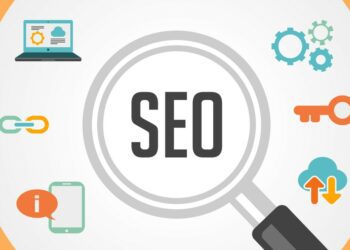Organic traffic is arguably the best source of pre-qualified traffic online. If your website is well optimised for SEO, you will benefit from a regular stream of customers who are actively looking for your products, and you won’t have to pay to get in front of them like with PPC or other paid marketing activity.
For e-commerce stores, the most important pages to optimise are your product pages. In this article, we look at some tips on how to optimise your product pages for SEO.

1. Optimise Your Product Titles
The first thing to look at when reviewing your e-commerce SEO strategy is your keywords. Each of your product pages should have one or two focus keywords to be optimised for. Remember to look for long-tail and niche keywords as well as short – you’re unlikely to rank for ‘men’s suits’ but for ‘navy slim fit men’s suit jacket’ you will have much more of a chance both in the organic search results and the product feed.
Keyword research will give you a good idea of longer-tail keywords to rank for, and the monthly demand for these. Try free tools such as Google Trends or Keyword Planner (available via Google Ads), or paid-for SEO tools such as SpyFu, Moz and Ahrefs.
2. Avoid Duplicate Product Descriptions
One big consideration and a common mistake is that many e-commerce stores use manufacturer-supplied product descriptions. This is a form of duplicate content and in a way is worse than having no product description at all, because your website will be penalised for using duplicate content. Beyond this, your tone and the manufacturer’s tone may be different, so your e-commerce store will lack authenticity – try (wherever possible) to get creative with your product descriptions.
3. Look At Your mMetadata
Everything you write on your product pages are contributing factors to SEO, but the metadata is the part that’s crawled and indexed by search engines, and it’s really important that you get this right for a number of reasons.

Firstly, your metadata tells search engines what’s on your page. For example, search engine Google crawlers can’t ‘see’ images, but when you add alt attributes to each image, they can understand what your images are. Accessibility-wise, people with vision impairments or blindness will rely on accurate alt attributes on your images so they can understand your content. The alt attributes won’t be published on your website like a product caption, but they are a crucial element of your metadata.
Second of all, your title tags and meta descriptions are what will appear in the search results. Unlike with Bing Ads or Google Ads where you can alter the headlines and descriptions as needed and A/B test various versions to boost click-through rates (CTR), your organic listings will always use your title tags and meta descriptions. So make sure that your title tags are accurate and that they use your focus keyword, and check that your meta descriptions give product information and encourage customers to click.
4. Make User Experience a Priority
Another major contributing factor to SEO is user experience or UX – in fact, they’re now almost interchangeable in the eyes of search engines. This is often the stumbling block for e-commerce businesses, as they often prioritise metadata and on-page content over the web experience when thinking about SEO. However, search engines do take user experience into account, and they rank pages based on popularity and relevance as well as user history.
So by optimising your website to prioritise user experience, keeping the purchase process simple and navigation clear, you’ll increase the quality of traffic on your website (by boosting key markers such as bounce rates and average pages per session) and will be more likely to continue to climb the organic ranks. Conversely, if your users frequently bounce off your website, are unable to purchase or struggle with a lack of product information, search engines will penalise your website and you may struggle to gain organic traffic.

5. Use Product Reviews
Product reviews work nicely for both SEO and enhancements to UX. 91% of people trust reviews as much as personal recommendations, and by gaining frequent good reviews and using schema markup, you can even make your overall star rating appear in the search engine results page, helping you to stand out among the competition and encourage clicks.
For e-commerce businesses looking to increase their search engine optimisation efforts, it’s important to ensure that your product pages prioritise user experience, and have all the elements in place to help search engine crawlers to understand the content of your website.







